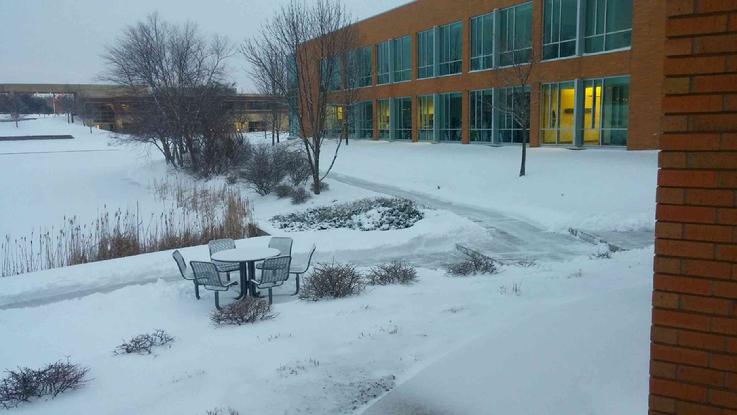Here in the Midwest, and in Des Moines, specifically, ice melt is essential for combating winter weather. Freezing rain, ice buildup, and packed snow are dangerous conditions for walkers, shoppers, employees, and anyone else traversing the area — which is why both homeowners and business owners stock up when the weather gets cooler.
Ice melt works like this: its special compounds lower the freezing point of water, which creates moisture and forms a liquid brine solution, generating heat and therefore, melting the ice. The lower the temperature, the less effective the ice melt will be, so keep that in mind during frigid weather. It will react slower, and even adding more of the product will not help speed up the process.
Factors to consider when using snow salt on your property include areas of danger, the amount of traffic, and access to sunlight. Here are a few tips to get you started on the right foot:
Use the Right Ice Melt For Your Application
Avoid wasting product and using a product that doesn’t work for your application by doing some preliminary research. There are many types of ice melt compounds like rock salt, potassium chloride, magnesium chloride, calcium chloride, solarized salt, and blends that include two or more of these compounds. Depending on what you get, the melting temperature and the way it affects concrete and plants will differ. If your concrete is less than two years old, avoid using ice melt on it altogether, since it can cause damage as it freezes and thaws. On top of that, factor in your area’s weather conditions, average winter temperatures, the property’s sun exposure, and whether or not pets will be traversing the area.
Be Proactive
Instead of waiting until after, apply the ice melt salt before the winter weather rolls in. That way, when the snow starts falling, the melt will immediately create that brine solution and prevent any formation of ice on the concrete. You can also pretreat your surfaces to help the effectiveness of the ice salt and reduce the amount of product you need to use. Another helpful tip is to continue applying throughout the course of the storm, and after, so that snow doesn’t get packed down and turn into a slippery surface.
Follow Use Instructions
The instructions are there for a reason, so make sure to follow them. It’s best to use a mechanical spreader to make sure you’re getting accurate coverage. Using too much or too little ice melt on your sidewalk or driveway can work against you instead of for you. The correct amount is normally one cup per square yard and will melt the ice enough for you to shovel it off the concrete, but the amount of product/yard can differ by type, so always check before applying.
If your property is just too large to tackle on your own, give us a call at Capital Landscaping, and we’ll take care of it for you. We’re pros when it comes to snow and ice removal and we are a proud member of the Snow and Ice Management Association (SIMA).

